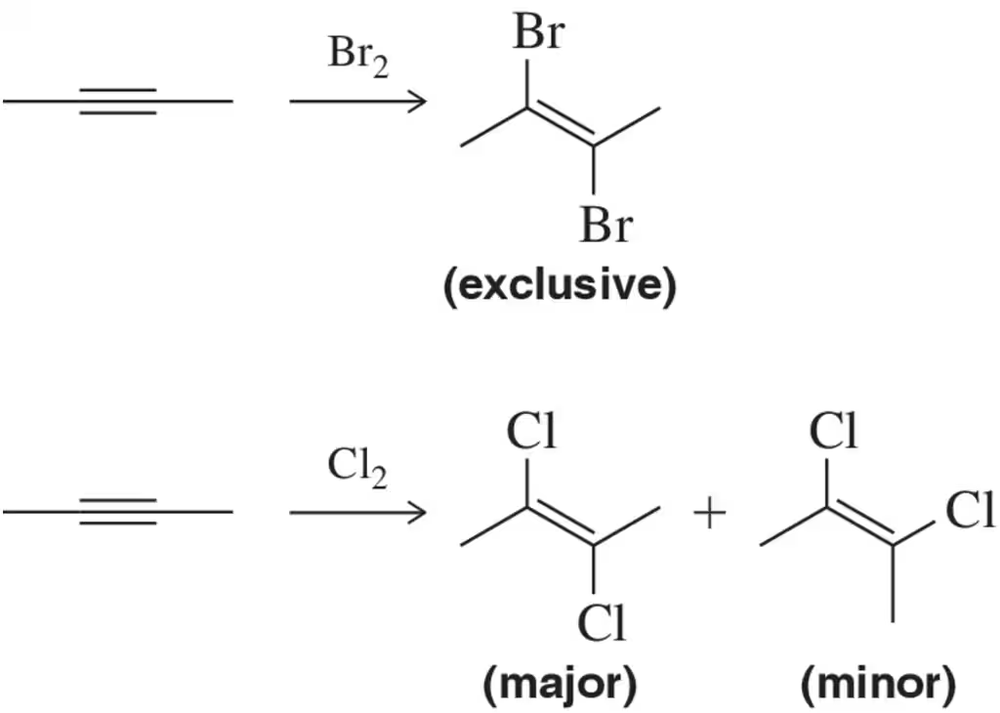What is the major product of the reaction of 1 mol of propyne with each of the following reagents?
c. Br2 (1 mol)/CH2Cl2

 Verified step by step guidance
Verified step by step guidance Verified video answer for a similar problem:
Verified video answer for a similar problem:



 2:15m
2:15mMaster Double halogenation of alkynes. with a bite sized video explanation from Johnny
Start learning